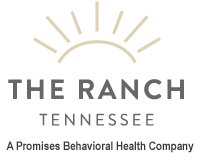It is not uncommon for post-traumatic stress disorder (PTSD) and substance use disorders (SUD) to co-occur. Many people with PTSD turn to alcohol or drugs to cope with the negative symptoms of PTSD such as nightmares, flashbacks, intense fear, and anxiety.
The COPE therapy model addresses the co-occurrence of PTSD and addiction. COPE therapy for PTSD uses evidence-based practices and cognitive-behavioral therapy techniques to help individuals overcome both issues simultaneously, which can improve recovery outcomes.
If you or a loved one struggles with PTSD and SUD, seek help today. The PTSD treatment center at The Ranch provides compassionate care and offers an individualized treatment plan tailored to each person’s needs. Don’t wait any longer – take the first step towards recovery by calling 1.844.876.7680.
PTSD and Addiction
Over one-fifth of military veterans suffer from post-traumatic stress disorder and substance use disorder. Though PTSD is more common in veterans than in the general population, anyone who experiences something traumatic, including abuse, childhood neglect, or violent assault, may develop the condition. Individuals who struggle with drug or alcohol addiction before experiencing something traumatic are at greater risk for developing co-occurring PTSD. However, even those sober previously are at risk of becoming addicted to drugs or alcohol following a traumatic event.
Treating PTSD and Addiction Together
Treating these two disorders together isn’t easy, but it is important. If someone receives treatment for PTSD but continues to drink or use drugs, the treatment won’t be as effective, and vice versa. The disorders are inextricably linked and must be treated together for the best chance of recovery success.
A breakthrough in treating PTSD and addiction is called Concurrent Treatment of Substance Use Disorders Using Prolonged Exposure, or COPE. The strategy combines cognitive behavioral therapy for treating addiction and exposure therapy for treating PTSD. Various researchers tested COPE in several locations, concluding its efficacy for many patients.
How Does COPE Work?
COPE therapy for PTSD and addiction involves working with a therapist one-on-one to recognize negative thoughts and behavior patterns. The therapist helps the patient develop strategies for changing those thoughts and behaviors. For example, a therapist may guide a patient to realize that she thinks she needs a drink to feel relaxed. The patient then recognizes that thought in her everyday life and replaces it with something more positive, such as going for a walk to relax instead of having a drink.
Exposure therapy is a commonly used technique for treating PTSD. It involves exposing a patient to what scares him in a safe and controlled environment. This helps the patient stop associating the thing, memory, or situation with fear. For example, a veteran may be afraid to drive because of his experience while serving overseas. A therapist would work with him to talk about the experience repeatedly, eventually getting close to a car and even driving it. The repeated exposure is safe and helps the individual detach fear from the act of driving.
COPE has proven effective for many people struggling with PTSD and addiction. Unfortunately, it isn’t a foolproof technique, as some people do not respond well to exposure therapy. However, the most important finding is that it is possible to treat both mental health and substance use concerns together successfully. When both are addressed, the patient stands a better chance of recovering from PTSD and addiction.
Start COPE Therapy for PTSD and Addiction Today at The Ranch
Don’t wait any longer – take the first step towards recovery from PTSD and addiction with COPE therapy at The Ranch. Our compassionate professionals are committed to helping you find healing and renewed hope for your future. Call 1.844.876.7680 today or complete our web form to begin your journey toward a peaceful, healthy life.

